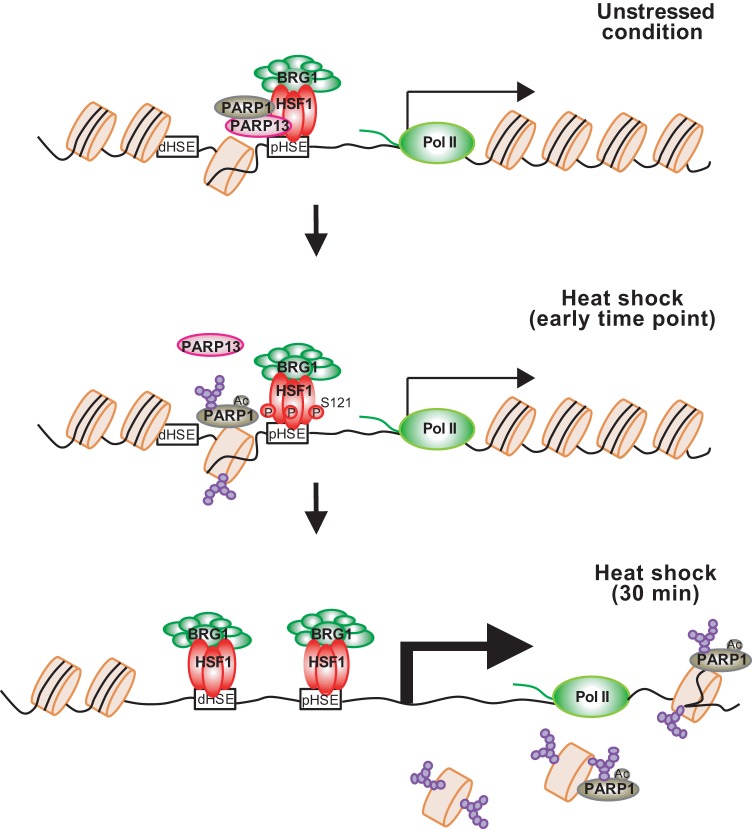FIG 8.
Regulatory mechanisms of the HSR in mammalian cells. Prior to heat shock, a small amount of HSF1 binds to the pHSE in the HSP70 promoter and allows for the establishment of paused Pol II and an open chromatin environment (unstressed condition). HSF1 also recruits PARP1 through a scaffold protein, PARP13. In response to a heat shock, activated and auto-PARylated PARP1 dissociates from HSF1-PARP13 and is redistributed throughout the HSP70 locus. It PARylates chromatin around the pHSE initially (heat shock, early time point) and around the gene body afterward (heat shock, 30 min). Heat shock-activated HSF1 binds efficiently to the pHSE and dHSE, whose chromatin is decondensed by PARylation, and robustly induces HSP70 transcription. PARP13 also dissociates from HSF1 in a manner dependent on the phosphorylation of HSF1-Ser121.

